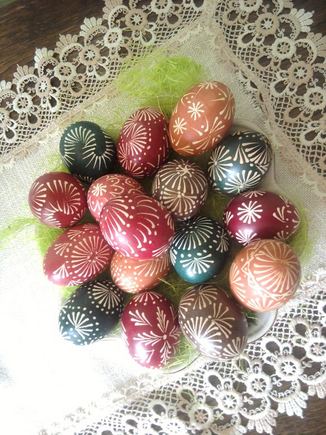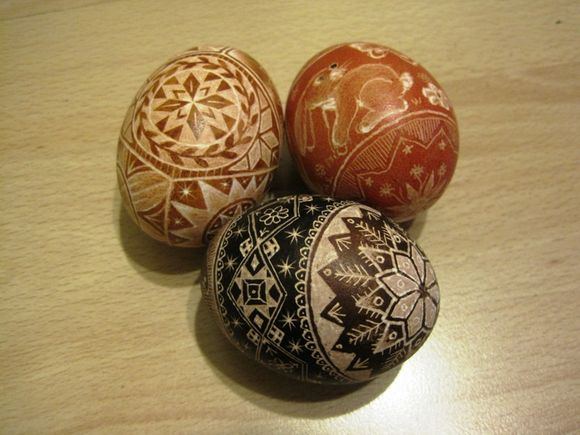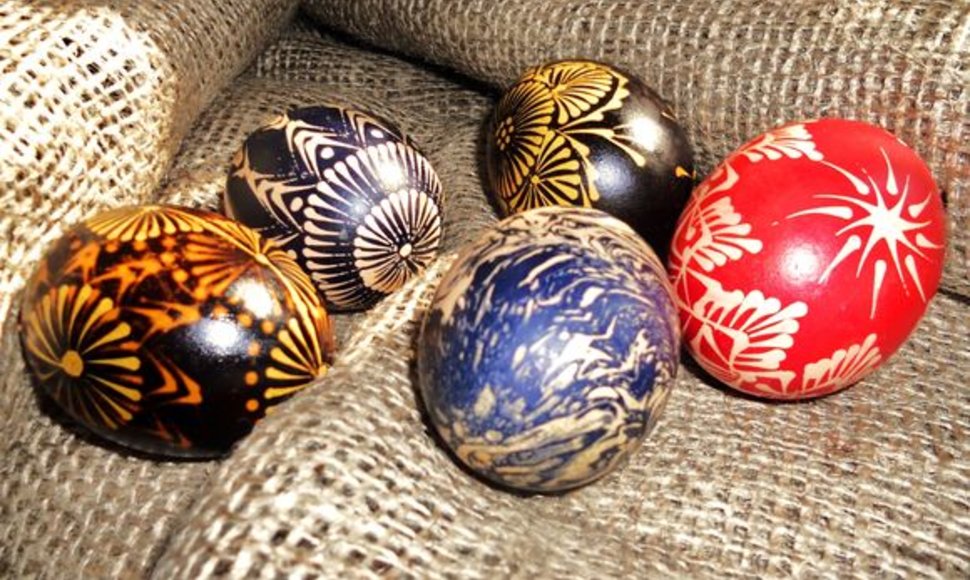Former Fall River resident Marcy Couitt, now living in Berkley (USA), keeps the custom alive by offering workshops for second-, third- and fourth-generation descendants of Lithuanian immigrants. Her goal is to preserve the Baltic country's rich legacy while teaching younger generations about the fascinating history of their ancestral home.
"It's nice to pass the tradition and see how vibrant it is," Couitt says, adding that teens and young children enjoy creating the colorful Easter eggs and straw Christmas decorations that are also popular in Lithuania.
Couitt, who works as a wound-care specialist for a home-care agency based in Fall River, explains that Lithuania was absorbed into the Soviet Union for almost 50 years before regaining its sovereignty in the 1990s. Artists, fearful of openly expressing their Christianity while the country was under Communist rule, incorporated Christian symbols such as crosses and wheat stalks into otherwise secular designs in an effort to pass their strong faith to others.
"It was a teachable moment," Couitt says, adding that one of the most popular "margučiai" designs is the starburst that represents Jesus rising from the tomb to new life on Easter morning.
 |
| 15min.lt skaitytojos Ingos Galkutės nuotr./15min.lt skaitytojos Ingos Galkutės nuotr./A second way is to create a design on the egg using a sharp pen dipped in beeswax, coloring the egg and then gently removing the wax to reveal a design in the color of the eggshell. |
According to Couitt, two basic methods are used to decorate the hard-boiled eggs. The first technique is to completely color the egg and then etch a design with an X-acto knife or sharp pin. A second way is to create a design on the egg using a sharp pen dipped in beeswax, coloring the egg and then gently removing the wax to reveal a design in the color of the eggshell. By using brightly hued dyes, the eggs are pink, lime, lemon, lavender, orange and light blue, and are often used to create festive Easter centerpieces.
The artisan adds that homemade natural dyes were used in Lithuania until commercial dyes became available. Families in the Baltic agricultural country boiled the eggs in water containing onion-skins, dried birch leaves or bark from various indigenous trees.
"Scratching onion-skin dyed eggs is a Lithuanian folk-art that reflects a people with great sensitivity for beauty and national pride using materials commonly available to every household," Couitt says.
"National boundaries do not determine crafts, so the art of scratch-carving on eggs spread throughout Northern Europe."
Couitt says that the wax-resist method of egg decorating only became popular in Lithuania during the last century, whereas etched Easter eggs have been created since ancient times.
Couitt's daughter, Stephanie, who attended Holy Name School in Fall River and now attends Bridgewater State University, where she is majoring in special and elementary education and fine arts, assists her mother in presenting the workshops.
"I have been doing this since I could walk," Stephanie says, noting that it's important for young people to learn about their cultural heritage. She attended a Lithuanian cultural immersion camp in Vermont for many years, and now serves as a counselor at the facility, where campers learn to enjoy ethnic crafts, cuisine and dancing.
"It's the best two weeks of my summer," she says.
 |
| 15min.lt skaitytojos Ievos Šidlauskaitės nuotr./ |












